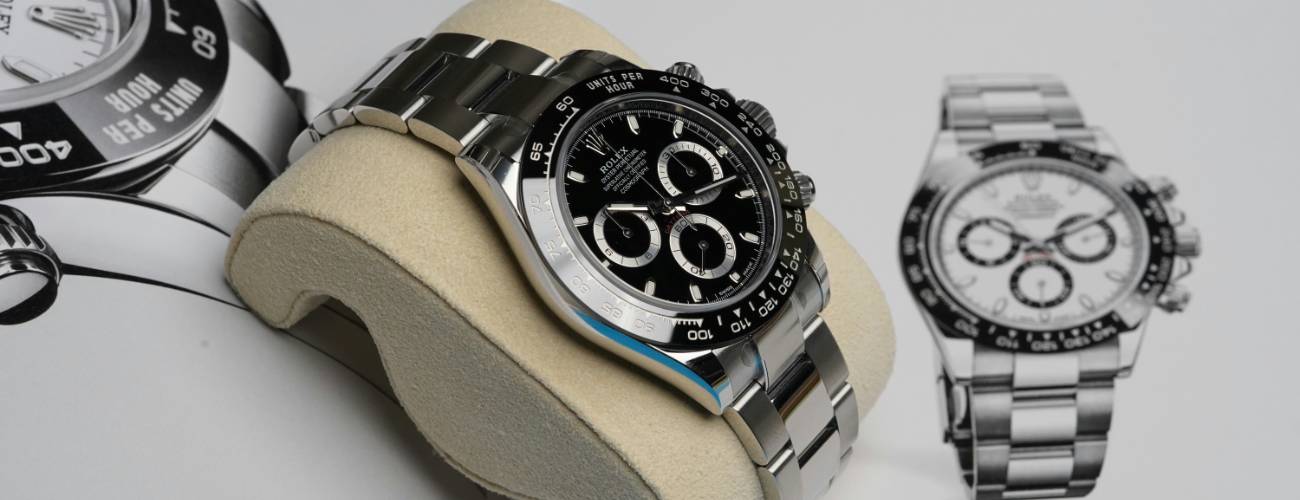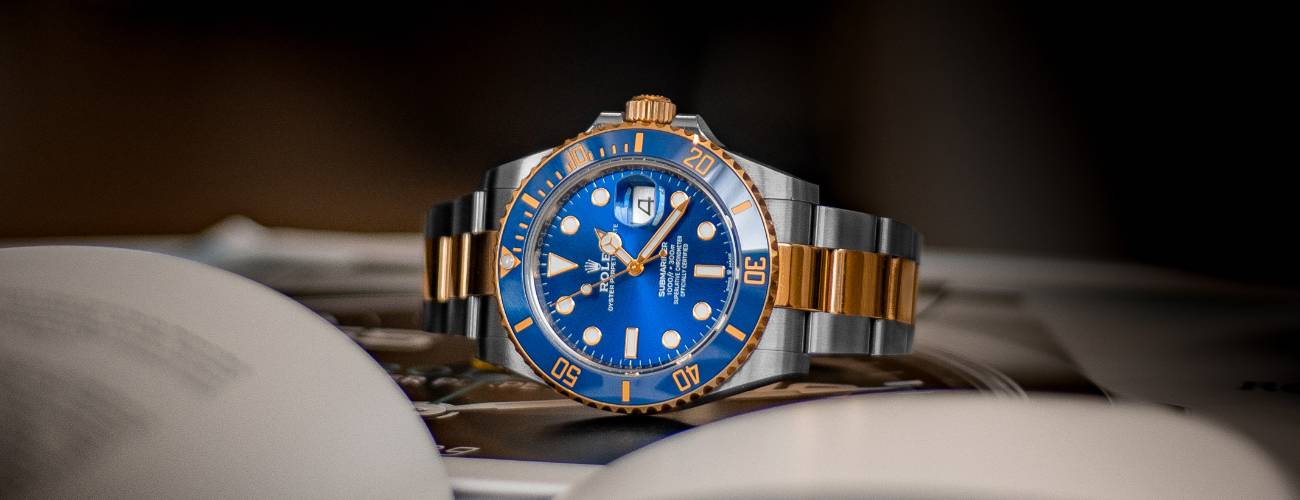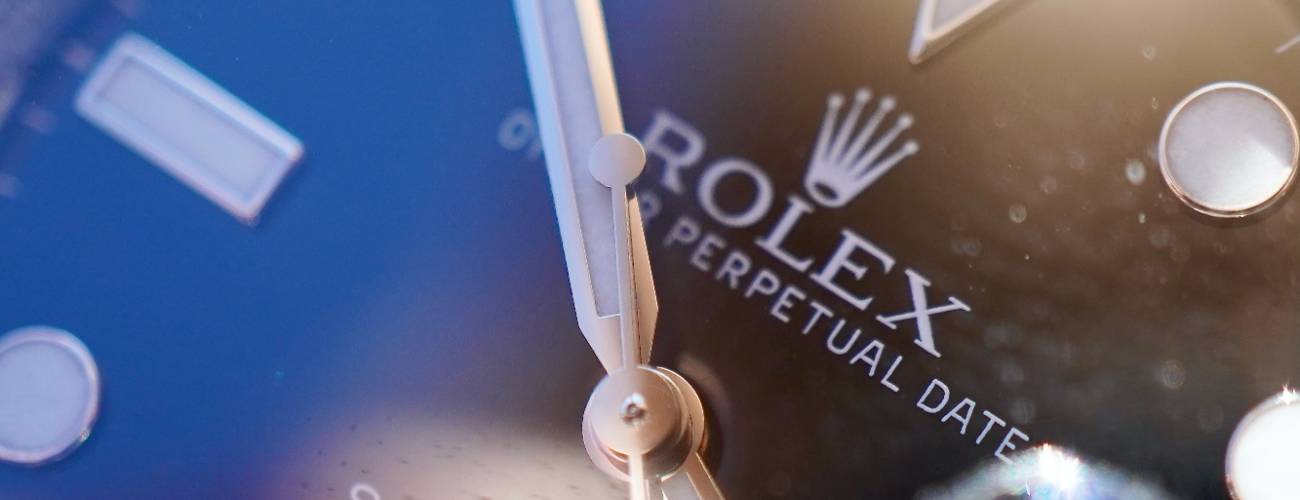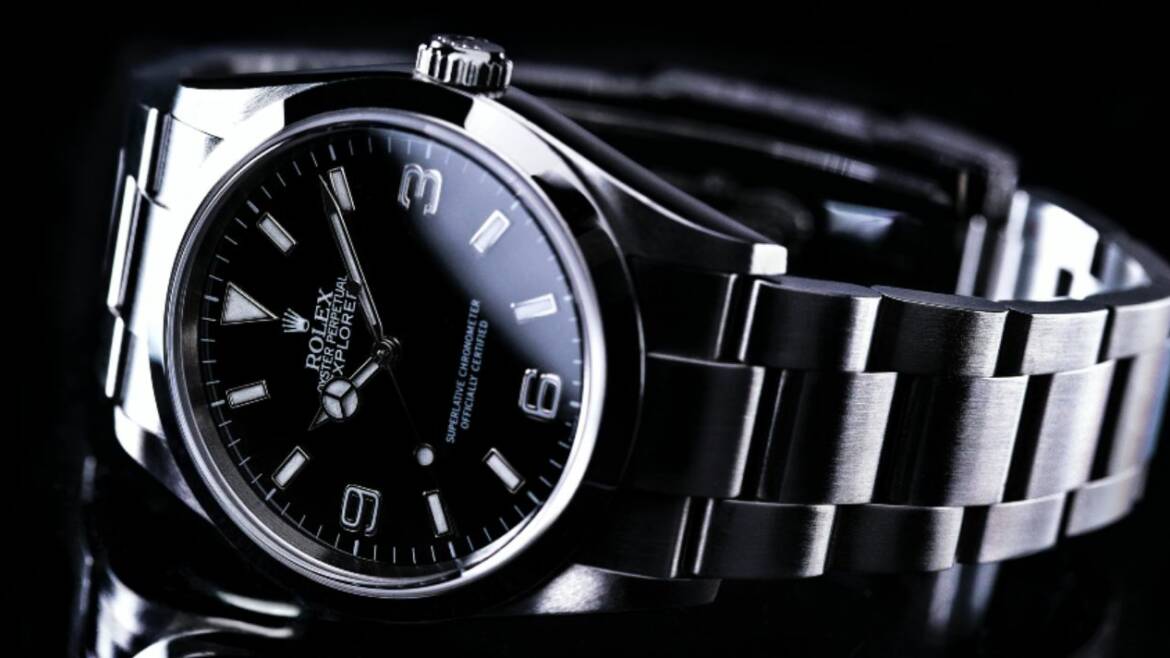Should You Sell Your Rolex? Why Rolex Watches Hold Their Value
Rolex watches are more than time-telling devices – they’re emblems of opulence and prestige. The Rolex brand, renowned worldwide, often signifies success and wealth. But what makes a Rolex retain its value and what should you think about before parting ways with your prized possession?
Do Rolex watches increase in value over time?
A Rolex is more than a name – it’s a legacy in watchmaking. Over the years, its allure has been cemented in its exclusivity, style, and sophistication. Being a luxury brand, Rolex watches enjoy an enviable association with celebrities and high-profile personalities, amplifying their appeal. Rolex has maintained its exclusive status for decades, with the worth of their watches consistently surpassing the inflation rate.
There are several factors that contribute to the enduring value and potential increase of a Rolex watch over time. Here’s a more detailed look:
- Brand Prestige and Reputation: Rolex is universally recognized as a symbol of luxury and craftsmanship. It has a long history of producing high-quality, precision timepieces that are durable, reliable, and fashionable. This longstanding reputation contributes significantly to the brand’s appeal and the corresponding value of its watches.
- Exclusivity and Scarcity: Rolex ensures the exclusivity of its watches by controlling their production and distribution. They produce a limited number of watches each year, creating a sense of scarcity and driving up demand. This scarcity, combined with high demand, helps Rolex watches retain, and often increase, their value over time.
- Quality of Craftsmanship: Rolex watches are made using high-quality materials and advanced technology. The watches are assembled by highly trained watchmakers who ensure each piece meets the brand’s rigorous standards. This quality of craftsmanship ensures the watches’ longevity, another factor that contributes to their enduring value.
- Iconic and Timeless Designs: Rolex watches are renowned for their iconic and timeless designs. Models like the Submariner, Daytona, and Datejust have been popular for decades. Their enduring appeal contributes to their ability to hold their value.
- Inflation and Global Economic Factors: Rolex regularly increases the retail prices of their watches, often in line with or above the rate of inflation. These regular price increases contribute to the appreciation of Rolex watches over time. Furthermore, during times of economic uncertainty, many investors turn to tangible assets, like luxury watches, as a store of value.
- Celebrity Endorsements and High-Profile Events: Rolex has a history of being worn by influential figures and celebrities, from world leaders to sports icons. The brand is also often associated with prestigious events, such as Wimbledon and the Oscars. These associations further enhance the brand’s prestige and the value of its watches.
- Innovation and Technological Advancements: Rolex is committed to innovation. The brand has introduced many firsts in watchmaking, such as the first waterproof wristwatch and the first wristwatch with an automatically changing date on the dial. These technological advancements contribute to the brand’s reputation for quality and innovation, further increasing the value of its watches.

Remember, while many Rolex watches retain or even increase their value over time, this is not always the case for every model. It’s important to research specific models and watch market trends when considering a Rolex watch as an investment.
The uniqueness factor
The value of a Rolex watch can significantly be influenced by its rarity. While all Rolex watches carry a hallmark of prestige and finesse, some styles and models hold their value better due to their rarity. This makes them a potentially rewarding investment.
Rare Rolex watches are highly sought after, given their limited supply. However, predicting which pieces will appreciate over time can be tricky. Typically, models that are discontinued, were part of a limited edition, or had a scarce production are likely to fetch more, as collectors are inclined to pay premium prices for such unique pieces.
Take, for instance, Paul Newman’s Cosmograph Daytona, which garnered a whopping $17.8m at an auction in 2017.
Should you sell your Rolex?
Deciding whether or not to sell your Rolex is a personal decision and can depend on a variety of factors. Here are some things to consider:
- Value Appreciation: One of the key factors to think about is the potential appreciation of your Rolex watch. As we have discussed, certain models, especially rare, vintage, or iconic sports models, can significantly increase in value over time. If your watch falls into these categories, it might be worthwhile to hold onto it as an investment.
- Personal Attachment: If your Rolex holds sentimental value, such as being a family heirloom or a gift marking a special occasion, you might want to keep it. These emotional connections can often outweigh any financial gains.
- Financial Needs: If you’re facing financial difficulties, selling your Rolex might provide some relief. Rolex watches are known for retaining their value well, and in some cases, you might get a higher price than the original purchase price, especially if the watch is a sought-after model or in excellent condition.
- Market Conditions: The market for luxury watches can fluctuate. Depending on current demand, the value of certain models can rise or fall. Doing some research or seeking advice from a professional watch dealer can help you determine the best time to sell.
- Future Plans: Are you planning to upgrade to a newer or more valuable model? If so, selling your current Rolex could help finance this purchase.
- Maintenance and Upkeep: Luxury watches require regular maintenance to keep them in good working condition. If you’re not interested in the time or expense required for this upkeep, selling may be a good option.
The best models for investment
Investing in the best Rolex models requires an understanding of the specific attributes that make some watches more desirable and, thus, more likely to increase in value over time. Here’s a closer look:
1. Rolex Sports Watches
Sports models, such as the Rolex Submariner, GMT-Master II, and Daytona, are among the most sought-after Rolex watches. These models have historically shown to retain or even appreciate in value. They’re renowned for their robustness, functionality, and timeless design. The Daytona, for instance, gained enormous popularity after actor Paul Newman was spotted wearing one. A Daytona owned by Newman was even auctioned for $17.8 million in 2017, showing the potential value these watches can reach.

2. Limited Edition and Discontinued Models
Limited edition or discontinued Rolex watches can often become highly coveted by collectors. For example, the “Hulk” Submariner, with its unique green dial and bezel, is known to have appreciated significantly in value since its discontinuation. Similarly, watches like the “Pepsi” GMT-Master II, named for its red-and-blue bezel, have also seen value appreciation due to their unique design and limited availability.
3. Rolex Watches with Rare Features
Watches with unique or rare features, such as specific dial colours, rare bezel types, or unusual markings, can be particularly desirable to collectors. For instance, the Daytona with a “Paul Newman” dial, characterized by a contrasting outer track on the dial, is significantly more valuable than a standard Daytona.
4. Rolex Watches with Provenance
Watches that have been owned by celebrities or have some historical significance often fetch higher prices. The association with a well-known personality or a significant historical event can make these watches particularly desirable to collectors.
5. Watches in Excellent Condition
Regardless of the model, watches in excellent or unworn condition are likely to be more valuable. Original parts, a well-preserved dial, and a functioning movement are crucial. Furthermore, watches with their original box and papers can command higher prices. It’s worth servicing your Rolex before selling it.
Investing in vintage Rolex watches
Vintage Rolex watches are generally a safe bet for investment. Their value tends to grow over time, thanks to their high demand among watch enthusiasts and collectors. Although modern Rolexes remain desirable, the allure of vintage watches lies in their connection to the brand’s rich history. Each timepiece is a testament to Rolex’s service to various sectors, from science and sports to military and beyond.
The material matters
The composition of your Rolex also plays a pivotal role in determining its value over time. Contrary to popular belief, Rolex models crafted from stainless steel often promise a higher return on investment than those made from precious metals like gold. The ever-fluctuating price of gold doesn’t guarantee an increased value over time, while the demand for steel Rolexes continues to rise. Their wearability and durability significantly influence their long-term value, although trends may change over time.
Decoding the reference number
Locating the reference or serial number on your Rolex is a vital step in gauging its value. Ideally, you should have the original paperwork or manual that accompanied your watch purchase. Not only will this aid in researching your particular model, but it also serves as a validation for its authenticity to potential collectors. This reference is a four to six-digit number, usually engraved on the side of the watch case, visible only upon removing the watch band.
Market value vs. retail value
When contemplating the resale value of a Rolex watch, it’s important to understand the distinction between its retail value and market value. If you’re selling your Rolex to a dealer or a jeweller, they will likely resell it at a profit, meaning you’ll receive a price lower than the resell price. This price gap accommodates expenses like necessary repairs, maintenance, and cleaning. While Rolex watches don’t depreciate significantly, factors such as the demand for a particular model can influence the selling price, so it’s essential to research your model’s market value before selling.
Unsure of the value of your Rolex watch? Get in touch with us today for a valuation or advice on which models are best to invest in.

Frequently asked questions
Why do Rolex watches hold their value over time?
Several factors contribute to this phenomenon. These include the brand’s reputation and prestige, the quality of craftsmanship, exclusivity and scarcity of the watches, their timeless designs, association with celebrities and high-profile events, and the brand’s commitment to innovation.
What factors can influence the value of my Rolex watch?
The value of your Rolex can be influenced by factors like its rarity, the materials it’s made from, its condition, and whether you have the original box and papers. The specific model and its demand in the market also play significant roles.
Which Rolex models are the best investment?
Rolex sports watches, especially models like the Submariner, GMT-Master II, and Daytona, often make solid investments. Limited edition, discontinued, and vintage models are also typically sought after. However, it’s important to note that the watch market can be unpredictable, and not all models are guaranteed to increase in value.
Does the material of the Rolex watch affect its value?
Yes, the material does affect a Rolex’s value. For instance, Rolex watches made from stainless steel often return a higher profit than those made from gold, primarily due to their durability and the high demand in the market.
What’s the difference between the retail value and market value of my Rolex watch?
The retail value is the price at which a dealer or jeweller will sell the watch, whereas the market value is the price you can expect to get if you sell the watch. The difference between these two values can account for dealer profit, as well as costs associated with repairs, maintenance, and cleaning.
How can I find the model number of my Rolex watch?
The model or reference number is typically engraved on the side of the watch case. To see it, you may need to remove the watch band. This number, especially if accompanied by the original paperwork, can help determine the watch’s value.
Can newer Rolex models increase in value?
Yes, even newly discontinued designs can become popular with collectors, thus increasing in value. However, the watch market can be unpredictable, and trends can change over time.
Do all Rolex watches increase in value over time?
While many Rolex watches retain or increase their value over time, this is not always the case for every model. Certain factors such as demand, condition, and rarity can significantly influence a watch’s value.

